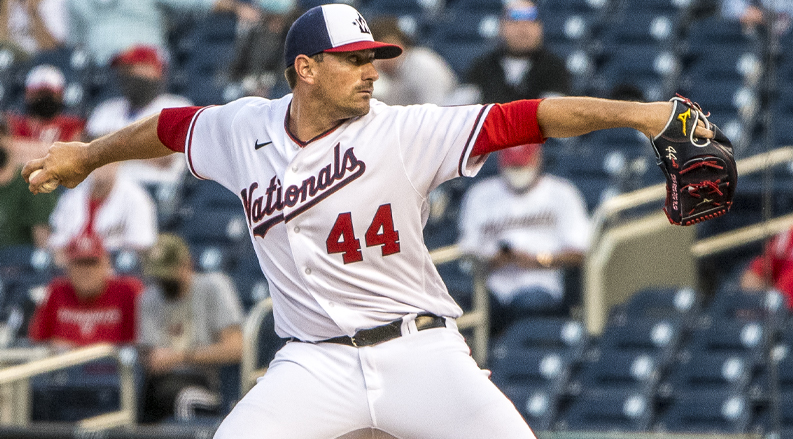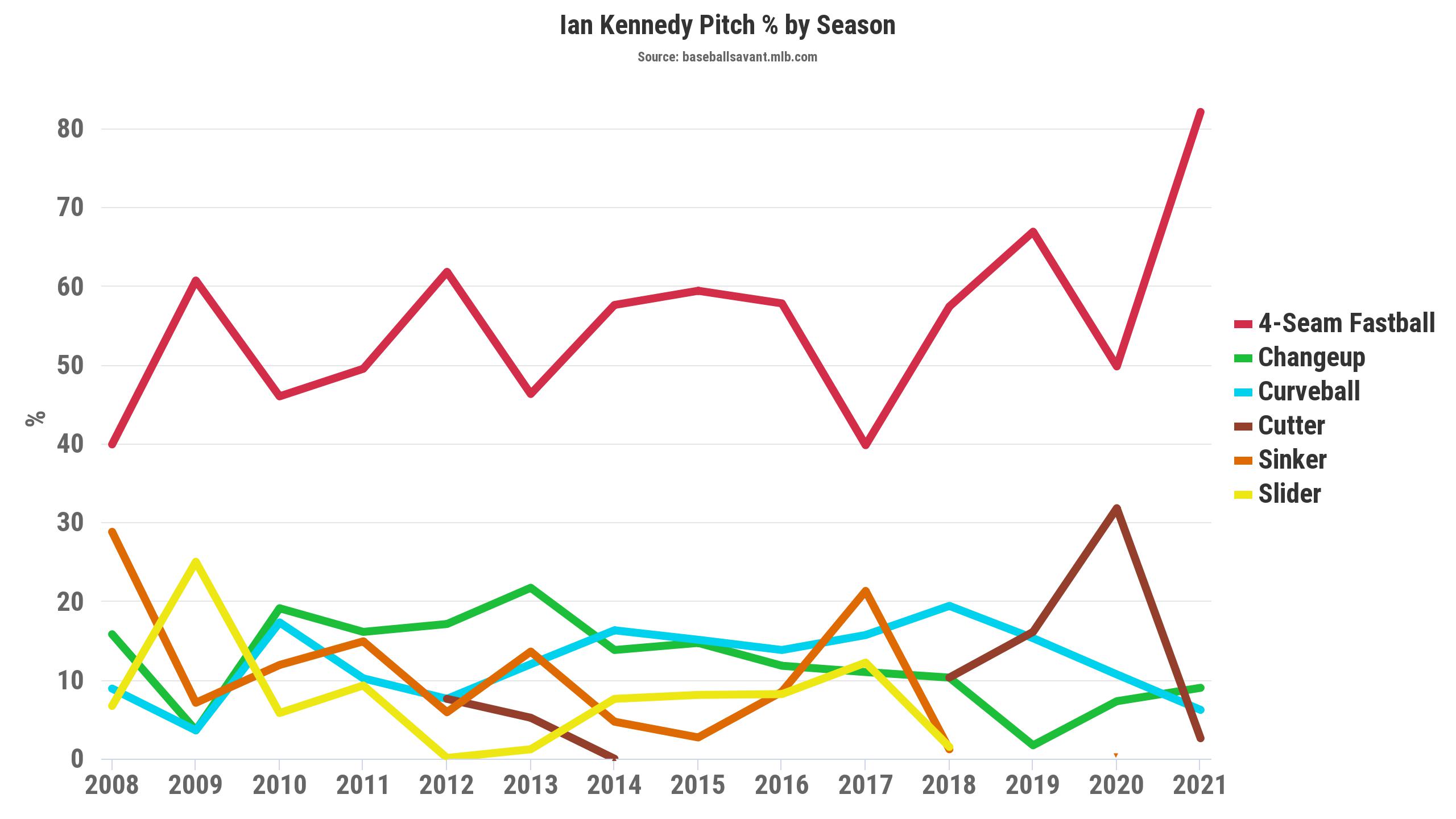For my first attempt at one of these trade deadline stories, it’s a trio of reliever who could provide varying degrees of help to the bullpen. One is likely not much better than what the team has to eat up low leverage innings, but has a past track record of success while the other two are likely a bit more useful should they be needed in the postseason.
——
Previous entries
——
As Dustin mentioned in the Berrios post, the Dodgers and Twins have made a few trades in recent years. The Dodgers and Rangers notably completed a trade at the deadline in 2017, with Yu Darvish sent to Los Angeles for Willie Calhoun, Brendon Davis and A.J. Alexy. The teams also made a much more minor deal a few weeks ago as Dennis Santana was sent to Texas for Kelvin Bautista.
The Dodgers and Nationals made a deal for a reliever back in August 2018, with Ryan Madson acquired for Andrew Istler.
——
Hansel Robles, Twins
Let’s start with the 30-year-old Hansel Robles, who signed a 1-year, $2 million deal with the Twins in December after he was non-tendered by the Angels.
Robles still isn’t near the level he was in 2019 with the Anaheim Los Angeles Angels, when he saved 23 games across his 71 appearances and 72 2/3 IP, but has rebounded a bit in 41 games for the Twins this season. Sitting at a 3.93 ERA/ 4.32 FIP/4.61 xFIP, that’s much better than the 10.26/5.89/5.20 he produced in just 16 2/3 IP across 18 games last year.
Now, that’s not to say that Robles is some perfect solution to many of the Dodgers’ problems. He’s still at a 12.9 BB%, well off the 5.7% pace he held during his breakout 2019 campaign. And when you figure in he’d been in double digits for three straight years, there’s a chance the 2019 season was an anomaly as his 2.88 FIP was nearly a full run better than any other point in his career.
However, he’s been OK against righties in 2021 (.203/.308/.304/.612) which is relatively similar to his 2019 against righties (.217/.268/.333/.601). All four of his homers allowed this season have been to left-handed batters, as have 14 of his 23 walks this season.
More than anything, he could be a useful piece to eat up some innings rather than running up the workload for Kenley Jansen, Blake Treinen, Jimmy Nelson, Joe Kelly and I guess even Phil Bickford. It likely wouldn’t cost much to bring him on given his contract and that he’s just a few months past being non-tendered by the Angels of all teams.
Ian Kennedy, Rangers
As for Ian Kennedy, the the 36-year-old reinvented himself as a reliever back in 2019 with Kansas City while in the middle of his 5-year, $70,000,000 deal signed in January 2016. Now he’s on a 1-year, $2.15 million deal after signing a minor-league deal with the Rangers back in February.
Kennedy has had some similar up and downs to Robles this past few years, though his highs have been a bit better. Saving 30 games in 63 games and 63 1/3 IP in 2019, Kennedy held a 2.99 FIP. Now after a strong 2019 season, Kennedy struggled last year before bouncing back to a similar result to 2019 this year.
With a 2.89 ERA/3.90 FIP/3.86 xFIP, Kennedy has been better against lefties (.204/.250/.347/.597) than righties (.242/.288/.419/.707) this year. That’s actually in line with his impressive 2019 season where he first moved to the bullpen full time.
His K% is back up to 27.1% after his career-best of 27.4% in 2019 dipped back down to 21.7% during last season’s abbreviated schedule. And unlike Robles, he’s 21.2 K-BB% thanks to his 5.9 BB%. That’s nowhere near Craig Kimbrel’s unbelievable 41.7%, but it does rank right around 60th in MLB among pitchers with at least 30 IP.
Kennedy’s control comes in part from his 82.1% usage of his fastball, easily topping his previous career high of 66.9% from 2019. It’s higher to lefties, sitting at 85.8%, while responsible for 15 Ks in 44 PAs. He occasionally mixes in a changeup to right-handed batters, using it 12.6% of the time, but that’s led to 5 hits in 6 batted ball events across 9 PAs.
Kennedy has always leaned on his four-seamer, but even now he is a much different pitcher than he used to be.
As you might assume, Kennedy’s exit velocity and Hard Hit% are among the league’s worst given his pitch usage, but his fastball’s value still ranks 12th among relievers per 100 pitches and 10th overall (ranking higher than Jake McGee in both, is sort of an interesting comparison given his fastball usage for the Dodgers last year).
Daniel Hudson, Nationals
Lastly, 34-year-old Daniel Hudson is in the second year of his two-year, $11 million deal signed in January 2020 after pitching Game 7 of the 2019 World Series.
Hudson is actually pitching better than he has at really any other point in his 12 major league seasons. Holding a 2.63 ERA/2.92 FIP/3.02 xFIP, Hudson holds a 37.7 K% to a 6.6 BB% in 27 1/3 IP for the Nationals. That’s the best K% of his career and the best BB% in nearly a decade. Hudson is doing it with primarily a fastball (72.2%) and a slider (24.5%).
The fastball is averaging his highest average mph of his career at 97.1 and is used 80.5% against left-handed batters. Adding in change-up to lefties, Hudson has held lefties to a .186/.234/.349/.583 line this season. There’s barely a platoon split for Hudson, as righties are at a nearly identical .167/.220/.333/.553 thanks to his slider that is at a 52.8 Whiff% at a 34.6% usage rate.
Hudson previously pitched for the Dodgers, appearing in 40 games during the 2018 season with a 4.11 ERA in his 46 IP. Just like Robles and Kennedy, Hudson also struggled in 2020 as he finished the year with a 6.10 ERA/6.29 FIP/5.13 xFIP in his 20 2/3 IP. Some of that can be attributed to bad luck as his HR/FB% ended up at 21.4%, significantly higher than any other point in his career.
Cost
I’ll be honest, I can’t say exactly what makes a ton of sense for any of these three. In the past few years, the Dodgers have sent off Yordan Alvarez for Josh Fields, Oneil Cruz and Angel German for Tony Watson, Corey Copping for John Axford, the previously mentioned Istler for Madson and Adam Kolarek for Niko Hulsizer.
At the time, little was known of Alvarez while none of German, Cruz, Copping, Istler or Hulsizer were highly ranked prospects at the time even if a few might have been clearly upside guys at the lower levels of the minors. It doesn’t look like any of them have reached the majors just yet, though some have moved to the top of the prospect rankings in their new organizations (Cruz for example is ranked around third for the Pirates right now).
Kennedy and Hudson could theoretically cost a little more given how they have pitched this season, but it still doesn’t feel like it should cost anything too significant. My educated guess says it comes down to who piques the interest of the Nationals or Rangers, while Robles is really a lottery ticket type of guy given his limitations.
——
Honestly, these rental trades for relievers could be pretty volatile. It’s going to end up with a small sample size the rest of the season, and even worse it is going to come at a time when everyone is clearly going to judge the move a bit more irrationally.
Kolarek panned out pretty well all things considered, Watson was probably a mixed bag and Axford ended up being pretty forgettable. Madson and Fields were a mix of it all. Madson pitched pretty well through most of the 2018 postseason after struggling in 9 regular season games following the trade, while Fields maybe ended up with a longer leash than he should have, but pitched well in all but 1 of his 8 postseason games for the Dodgers.
If the Dodgers don’t land a higher-leverage reliever, one of these types of 7th/8th-inning guys could make a lot of sense for a bullpen looking for stability.
 Dodgers Digest Los Angeles Dodgers Baseball Blog
Dodgers Digest Los Angeles Dodgers Baseball Blog

